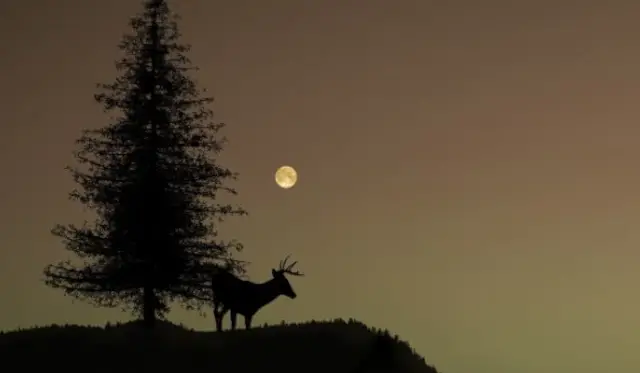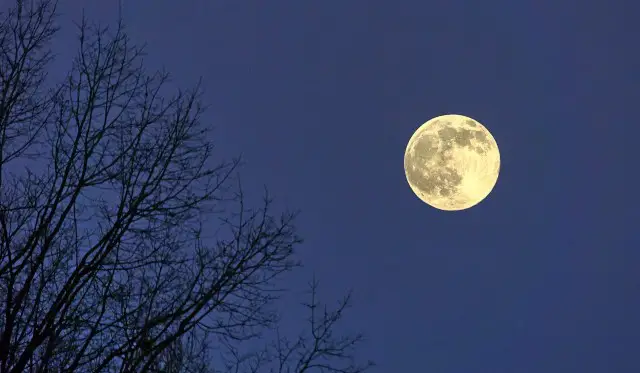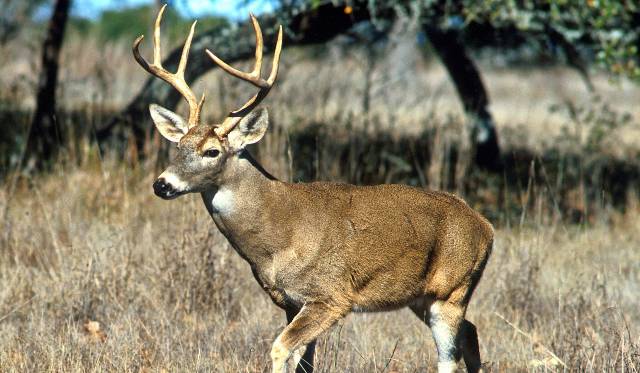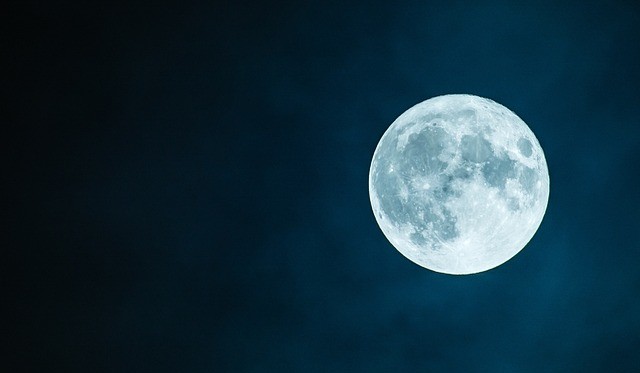Deer hunting requires skill, patience, and an understanding of deer behavior. One factor that hunters often consider is the impact of the moon phases on deer movement. Identifying the best moon phase for deer hunting may help you track down your next deer.

Many hunters strongly believe that specific moon phases influence deer activity, affecting feeding habits and overall movement.
While there’s no definitive answer to the best moon phase for hunting, research and anecdotal evidence can guide you in deciding when to head out into the field.
Contents
Deer Activity During Different Moon Phases
As a deer hunter, understanding the impact of moon phases on deer activity can help improve your hunting strategy and overall success. Deer activity varies during different moon phases, including the New Moon, First Quarter Moon, Full Moon, and Last Quarter Moon.
New Moon
During the New Moon phase, deer activity typically peaks just after first light. This means that morning hunts might be more fruitful during this time. A secondary activity period to target may be late afternoon.
During my hunting trips, I have observed what appears to be deer movement decrease throughout the day during a New Moon. Target your hunts in the early sunrise hours to make the most of this time during the new moon phase.
First Quarter Moon
When the First Quarter Moon is present, you likely will notice a slight decline in deer activity during the day. Deer activity during daylight hours tends to be minimal throughout this moon phase in comparison to other lunar phases.
Focus your hunting near areas with good cover, as deer may be more likely to bed down during the day.
Full Moon
During a Full Moon, deer activity patterns tend to differ more noticeably. Although there is significant debate over whether activity increases or decreases during this phase.
Some hunters believe that this moon period causes deer to be more active during nighttime, making them less likely to move during the day.
I target my hunts during this moon cycle when the moon is high in the sky during midday, as I find deer to be more active during the day when the moon is full and bright. A secondary period, try hunting closer to the night hours, as deer may be more active during this time.
Last Quarter Moon
The Last Quarter Moon presents a mix of deer activity patterns however increased movement towards mid-morning to the late afternoon in my experience. Plan on hunting near areas with good visibility, as deer may be more likely to move during the day.
Across all moon phases, it’s essential to consider other variables, such as weather and habitat changes, that could affect deer movements.

Best Times of Day for Deer Hunting
Morning
During the morning hours of hunting season, deer tend to be more active, especially when it comes to hunting opportunities. In the new moon phase, the peak activity for deer occurs just after first light, making morning hunts highly favorable.
As a hunter, you should aim to be in your hunting area before dawn and dusk to maximize your chances of success.
Afternoon
The afternoon can also provide ideal hunting conditions. When the daylights starts to fade and the temperature begins to drop , deer will often be on the move in search of food, water, or even bedding sites.
This activity can provide hunters with ample opportunities for a successful deer hunt, particularly during dusk when visibility might become more challenging.
Factors Affecting Deer Movement
There are a few factors that can influence deer movement, including:
- Weather: Cold fronts and changing weather patterns may encourage deer to move, as they can feel the changes and prepare in advance of a storm.
- Food sources: The availability of food can have a significant impact on deer activity. Deer are more likely to be active and visible when there is an abundance of food, such as acorns or other natural sources.
- Pressured deer: Hunting pressure can cause deer to alter their behavior, possibly by moving less during the day and becoming more nocturnal.
- Barometric pressure: Barometric pressure can impact deer movement. Changes in barometric pressure can indicate an incoming weather front, and deer may become more or less active before the front arrives.
- Light intensity: Light intensity can impact deer movement depending on the time of day. During low light conditions, such as dawn and dusk, deer may be more active and visible, while during bright daylight hours, they may be more likely to bed down and rest in shaded areas.
To increase your chances of success, consider these factors and other environmental conditions when hunting deer. Plan your trips around moon phases, weather forecasts, and food sources.
Moon Phase Deer Hunting Tips
As a deer hunter, understanding the impact of moon phases on deer activity can improve your chances of success. I recommend using lunar calendars and adapting your hunting strategies accordingly.

Using Moon Phase Calendars
Lunar phase calendars can help predict movement patterns for deer. Keep up-to-date with the current moon phase and keep a calendar for future reference. Use a reliable moon phase calendar to better plan your hunting trips.
Lunar calendars can be useful tools for hunters as they provide information about the position of the moon, which can impact animal behavior. Pay attention to the moon’s position in the sky, as deer tend to move more during moonrise and moonset.
By using these calendars, hunters can plan their hunting trips around periods of peak animal activity, such as during a new moon or during the golden hours of sunrise and sunset.
Additionally, these calendars can also provide information about the best times to plant food plots or set up trail cameras, which can help hunters prepare for their trips and increase chances of success.
Adapting Your Hunting Strategies
By closely observing moon phases, you can adapt your strategies to increase your chances of encountering deer during peak activity times.
- Timing is essential: Match your hunting schedule with the moon’s overhead and underfoot times. Deer tend to be more active during these periods, increasing your chances of success. Take a gander at a lunar calendar for specific overhead/underfoot times.
- Plan around weather conditions: Windy and noisy evenings may hinder deer feeding, so pay attention to both lunar and weather conditions. Adjust your strategy to capitalize on the effects of the moon and the environment.
- Stay flexible: As the lunar phase changes, so should your approach. Remember, activity can also be influenced by factors like rutting behavior and food availability. It’s crucial to stay flexible and open to adjusting your tactics as you see fit.

Best Moon Phase for Deer Hunting: FAQs
What moon phase is generally best for deer hunting?
The moon phase can impact deer, but the best phase for hunting deer can vary. Hunters tend to find success during the rising evening full moon, as deer are more likely to feed late in the morning. However, other factors such as weather, location, and food sources also play a crucial role.
What moon phase do deer move the most during the day?
There isn’t a clear-cut answer to this, as activity may not increase or decrease significantly during different moon phases. However, deer are generally more active during the hours surrounding sunrise and sunset, regardless of the moon phase.
Is it better to hunt full moon or new moon?
Some hunters believe that during a this period, deer may be more active at night, making daytime movement less likely. A new moon, on the other hand, could result in reduced nighttime activity, potentially increasing daytime movement. Behavior of deer can be affected by many factors such as weather, and relying solely on moon phase may not guarantee success.
Does a full moon affect deer rut?
While moon phase can impact general movement activity, it’s worth noting that the moon is just one factor when it comes to the annual whitetail rut. The rutting activity is mainly influenced by factors like photoperiod, temperature, and local deer populations.
Is it better to hunt morning or evening during a full moon?
During a full moon, deer may be more active during nighttime hours, leading to increased movement late in the morning. Consequently, hunting late in the morning could provide better opportunities than hunting in the evening.
How does moon phase impact deer movement?
The gravitational pull of the moon is one theory behind how moon phases affect buck movements and deer feeding times. However, research on this topic has not shown a definitive connection between moon phase and deer movements. Other factors, such as weather conditions and food availability, most likely play a more significant role in influencing activity.